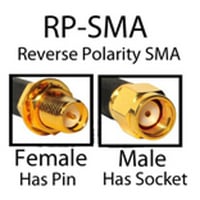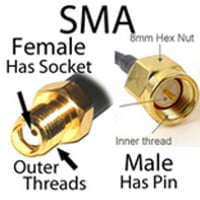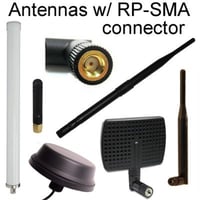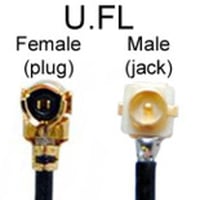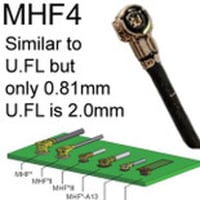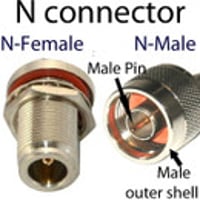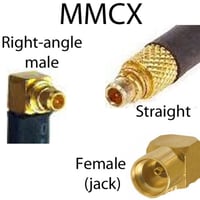SMA Extension Cable w/ Right Angles Male & Female: 1-FT, 14-inch, 18-in, 20-in, 22-inch
- SKU:
- SmRA12iSfRA100
- Availability:
- In stock
- Weight:
- 0.04 LBS
Data Alliance
SMA Extension Cable w/ Right Angle Male & Female
SMA Cable with Right-Angle on Both Ends: SMA Male (Right-Angle) to SMA Female (Right Angle)
- One end has an SMA-male right-angle and the other end has an SMA-female right-angle connector with bulkhead nut and washer.
- The length refers to the length of the cable between the connectors (not including the connectors).
- Data Alliance's high-quality soldered terminations of SMA connectors with soldering provide a low-loss connection with discontinuities kept to a minimum.
Compatibility with wireless standards & applications:
Our SMA extension cables support a wide frequency range (0GHz to 18GHz), maintain low broadband VSWR, and are precisely matched to 50 Ohm impedance—ensuring full compatibility with a wide range of wireless systems:
- WiFi standards: Including 2.4GHz and 8GHz bands—Wi-Fi HaLow 802.11AH, 802.11AX, 802.11AC, 802.11N, 802.11G, 802.11B, and 802.11A.
- Cellular networks: LTE / 4G, GSM / 3G, and WiMax for both data and voice
- IoT & M2M applications: Bluetooth, ZigBee, WiFi HaLow, RFID, LoRa, LTE-m, and NB-IoT, WiFi 6, WiFi 6E.
- Helium miners in Europe: Fully compatible with Bobcat miners, Sensecap miners, and all Helium LongFi devices—just like all our SMA-male connector antenna cables and adapters.
Cable is double-shielded, low-loss and very flexible. The cable-type is equivalent or better than LMR-100: Coax with black jacket has the same or better signal-loss-per-meter and flexibility as LMR100, and less attenuation (signal loss) than RG174. The higher quality of the cable of this antenna translates into lower loss/better performance. Coax is rated for outdoor use and is also suitable for indoor use. Recommended tightest continuous bend radius is 1.1 inch (28mm).

The temperature range for operational use of this 100-series coax and the cable assembly, is: -22 F ~ +185 F (-30 C ~ +85 C)
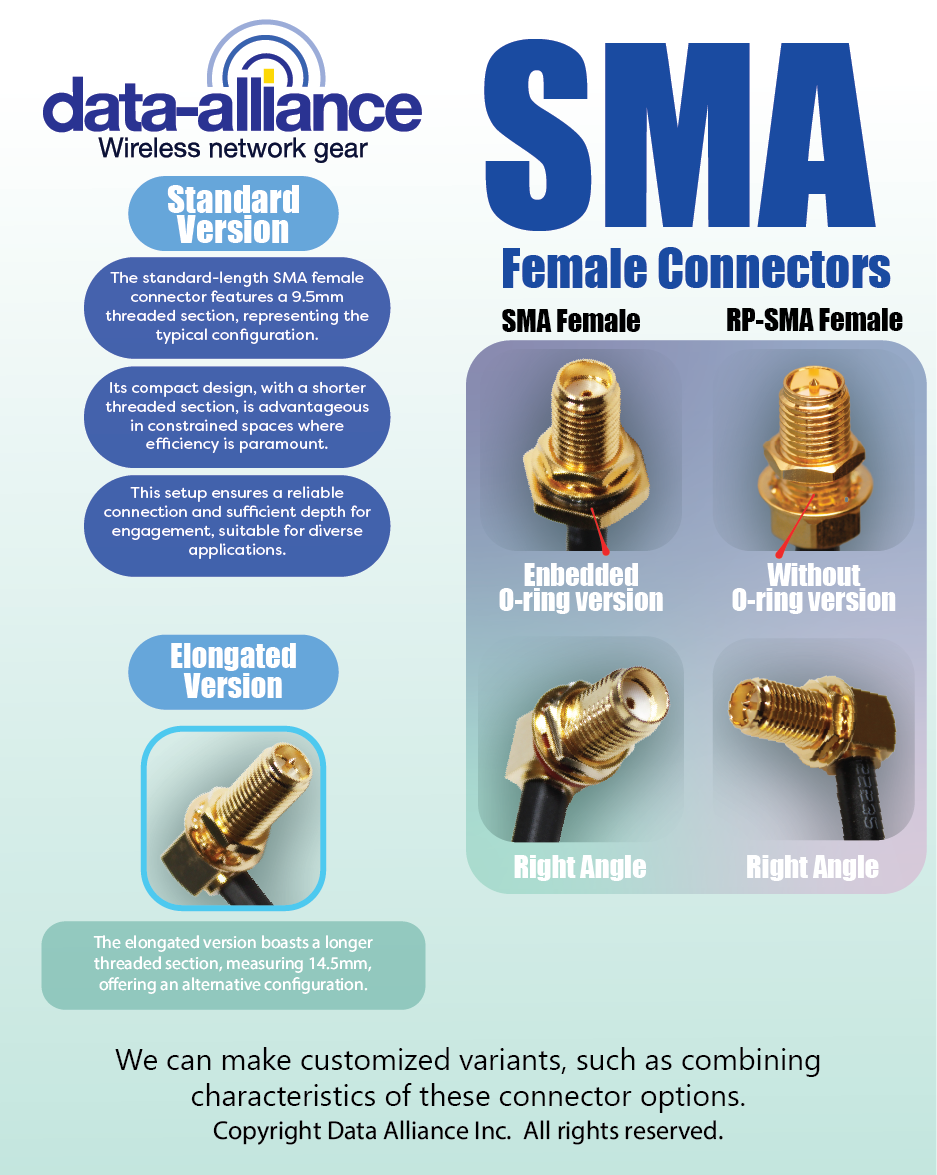
- This can be used to mount the connector (and thus the cable) on the wall of a network enclosure (to weatherproof the cable connection), or mount the connector on a case, panel or Printed Circuit Bard (PCB).
- Weatherproofing: Seal the hole where the female connector is mounted, by placing an O-ring between the wall of the enclosure and the bulkhead nut & washer on the female connector.
- All of our cables with SMA and RP-SMA female connectors have bulkhead mount hardware.
- The length of our standard SMA-female connector (threaded part) is 3/8 inches. We have a longer option: 14.5mm, which is available as an option. The longer 14.5mm option has an O-ring embedded in the flange to waterproof the port where the cable enters a network enclosure.
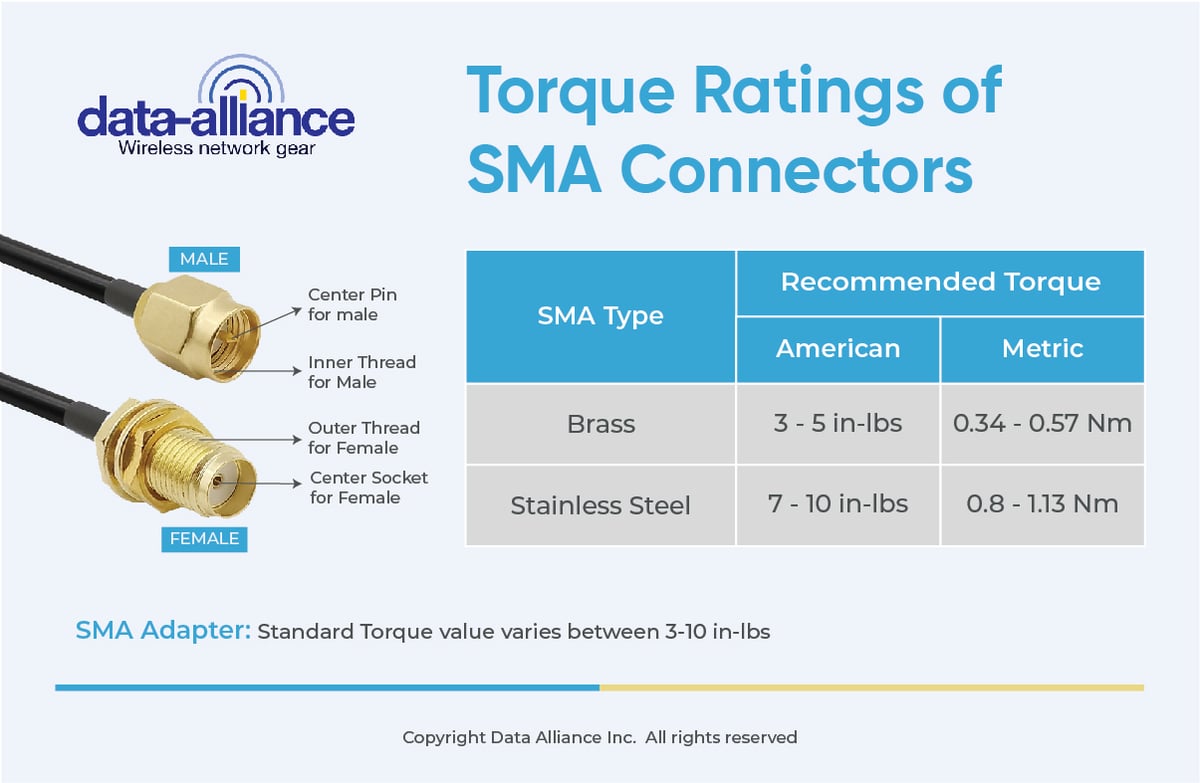
SMA Gender Determination: Key Point
- SMA gender is counter-intuitive: Please observe picture & note it is correct.
- The gender is referring to the pins inside-not the threads. SMA male has threads on inside.
RoHS 3 and REACH compliant: All of our antenna cables and RF adapters are compliant with RoHS 3 and REACH restrictions on content of lead and other heavy metals and toxins.
Related SMA Cables Products
- SMA Cables directory
- SMA Adapters
- SMA Extension Cables: Male to Female with straight and/or right angle connectors.
Frequently Asked Questions
1. What are the specific attenuation levels of the cable at various frequencies?
Attenuation levels can vary, but for this cable, typical attenuation is about 0.5 dB per foot at 1 GHz and increases with frequency. Knowing the attenuation levels helps engineers design systems with appropriate gain to compensate for these losses.
2. What are the VSWR (Voltage Standing Wave Ratio) specifications for this cable, and how does it impact signal integrity?
The VSWR for this SMA extension cable is typically less than 1.2:1. A low VSWR indicates that the cable has minimal signal reflection and loss, which is essential for maintaining signal integrity, especially in high-frequency applications.
3. What is the maximum frequency range this cable can support without significant signal degradation?
This SMA extension cable can support frequencies up to 6 GHz. Beyond this range, signal degradation may occur, impacting the efficiency of high-frequency applications such as certain Wi-Fi, GPS, and cellular systems.
4. How does the cable perform in terms of signal interference and crosstalk in densely packed environments?
The braided shielding and precise impedance control of the SMA extension cable help minimize signal interference and crosstalk, making it suitable for densely packed environments where multiple cables and electronic devices are present.
5. What is the effect of cable length on performance, particularly at high frequencies?
As the cable length increases, so does the attenuation, especially at high frequencies. This can lead to significant signal loss. Therefore, for high-frequency applications, it is essential to keep the cable length as short as possible to maintain signal quality.
6. How does the right-angle design of the connectors affect the cable's performance in tight spaces?
The right-angle connectors are designed to facilitate installations in confined spaces by allowing the cable to bend without kinking. This design helps maintain the integrity of the signal by preventing sharp bends that can cause signal loss and mechanical stress on the cable.
7. What is the minimum bend radius of the cable, and why is this specification important?
The minimum bend radius is typically 10 times the cable diameter. Adhering to the minimum bend radius is important to prevent mechanical damage and maintain the electrical performance of the cable by avoiding excessive stress and potential signal loss.
8. What kind of testing and quality control measures are implemented for these cables?
These cables undergo rigorous testing, including continuity tests, VSWR measurements, and physical inspections to ensure they meet industry standards. Quality control measures ensure the cables provide reliable performance and meet the specified electrical characteristics.
9. What materials are used for the connectors and cable shielding, and how do these materials affect performance?
The connectors are typically made of brass with gold plating, and the cable shielding is made of braided tinned copper. These materials provide excellent conductivity and corrosion resistance, ensuring reliable performance and durability in various environmental conditions.

